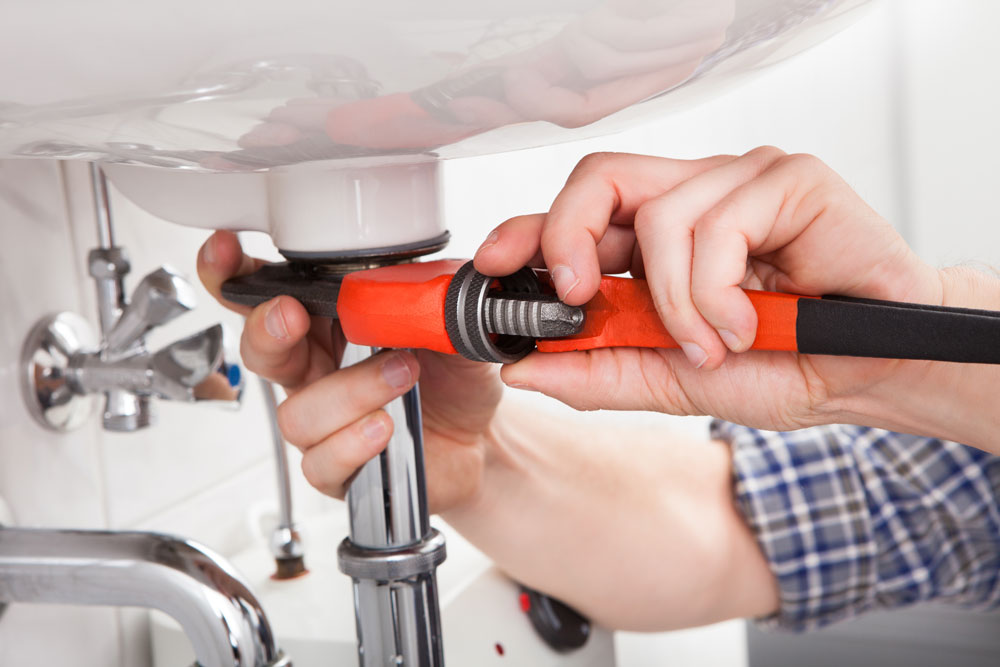Tips for Maintaining A Residential Plumbing System During Freezing Weather
August 24, 2023

Hamilton Plumbing, Heating, A/C, Rooter, a residential plumbing and HVAC services company, offers expert recommendations for keeping residential plumbing pipes in good condition during freezing temperatures.
Hamilton receives numerous calls for frozen or burst pipes whenever the temperature dips below freezing. Take a look at some of these plumbing tips to prepare your home for freezing temperatures.
When temperatures plummet, plumbing pipes are suddenly in danger of freezing and bursting. In fact, burst pipes are one of the most common causes of property damage during frigid weather and can cause thousands in water damage — easily $5,000 or more, according to the Insurance Institute for Business and Home Safety.
The pipes at greatest risk of freezing and bursting are located in unheated interior spaces, such as basements, attics, and garages. But even pipes running through cabinets or exterior walls can freeze. The good news is there are a few simple things homeowners can do to keep the water running and prevent water damage.
Some of the steps experts recommend may go against your better instincts of conserving water and heat, but the extra expense is nothing compared with a hefty repair bill.
Homeowners should take the following steps to protect their plumbing system during freezing temperatures:
- Keep garage doors closed, especially if there are water supply lines in the garage.
- Open kitchen and bathroom cabinet doors to allow warmer air to circulate around the plumbing, especially if the sinks are attached to an exterior wall. (Homeowners with small children should move all harmful cleaners and household chemicals out of little ones’ reach.)
- Let the cold water drip from a faucet served by exposed pipes. Running water through the pipe — even at a trickle — can help prevent pipes from freezing.
- Keep the thermostat set to the same temperature during the day and night. Avoid setting back the thermostat at night to save a few dollars on the heating bill.
- Before heading out of town, set the thermostat to a temperature no lower than 55° F.
For long term plumbing pipe protection, we recommend adding insulation to attics, basements, and crawl spaces; this will help retain heat in those areas. To prevent drafts, homeowners should seal cracks and openings around windows, doors, and at sill plates, which is where the house rests on its foundation.
If you turn on a faucet and only a trickle comes out, you may have a frozen pipe. If you suspect the pipes are frozen, be careful when thawing them out because if the pipe has already burst, the water will come flowing out and flood your home.
If a pipe has broken, homeowners should turn off the water at the main shutoff valve, which is usually located at the water meter or where the main line enters the house. If the water is still running and no pipes have burst, homeowners should take the following steps:
- Turn on the faucet. As the frozen pipe begins to thaw and the ice plug begins to melt, it’s important to let the water flow through. Running water through the pipe, regardless of how cold it is, will help melt ice in the pipe.
- Apply heat to the frozen section of the pipe using an electric heating pad wrapped around the pipe, an electric hair dryer, or a portable space heater (kept away from flammable materials), or by wrapping pipes with towels soaked in hot water. As tempting as it may be, do not use a blowtorch, a kerosene or propane heater, a charcoal stove, or any device with an open flame; the high heat can damage the pipes and even start a fire.
- Apply heat until proper water pressure is restored.
- Check all other faucets in the home for signs they may be frozen. If one pipe is frozen, others may be frozen as well.
Homeowners should call a licensed plumber for professional service if they are unable to locate the frozen area, if the frozen area is not accessible, or if they are unable to thaw the pipe themselves.
Last Updated: August 24, 2023
